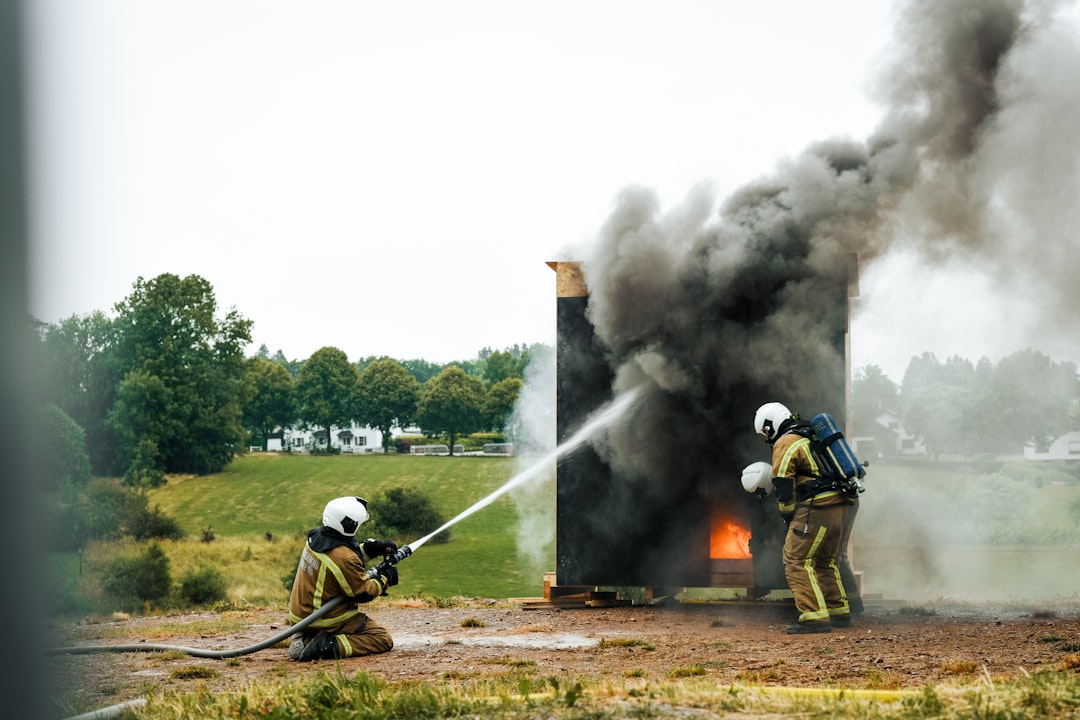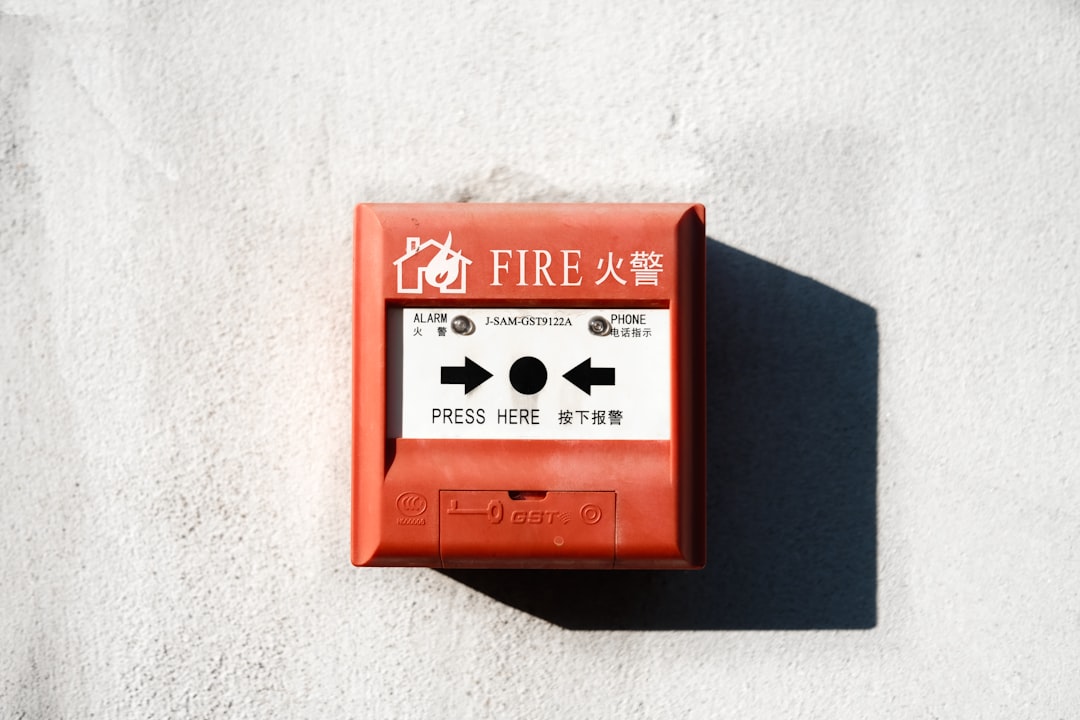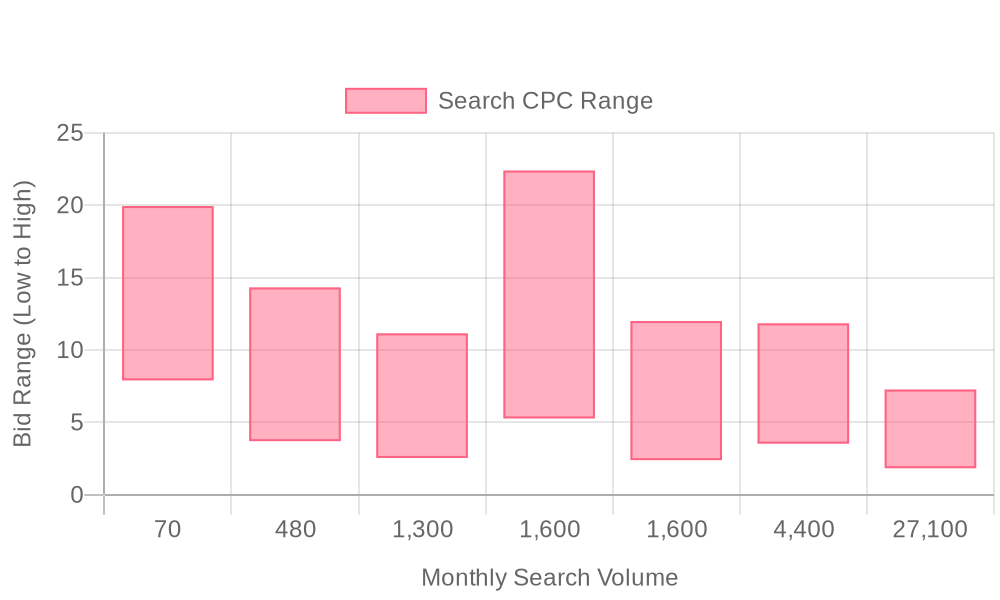
Supercharge your lead generation with a FREE Google Ads audit - no strings attached! See how you can generate more and higher quality leads
Get My Free Google Ads AuditFree consultation

No commitment
Supercharge your lead generation with a FREE Google Ads audit - no strings attached! See how you can generate more and higher quality leads
Get My Free Google Ads AuditFree consultation

No commitment
In the competitive landscape of fire insurance marketing, capturing high-intent prospects exactly when they begin their search can be transformative. One major challenge is that decision-makers often investigate services without leaving a trace, leading to missed opportunities. By utilizing Google Ads, fire insurance professionals can bridge this critical gap and ensure that marketing efforts target those genuinely seeking solutions. Succeeding in this sector means intercepting potential clients in their time of need, tailoring messages to specific audience segments, and using advanced tools to track and respond to customer intent swiftly.

Fire insurance providers face a rapidly shifting digital landscape where high-value prospects often research coverage options anonymously, making it difficult to capture intent and drive meaningful engagement. Modern digital marketing for insurance now empowers marketers to uncover these previously invisible opportunities, shaping campaigns that prioritize intent-rich audiences and maximize every dollar spent.
This guide details a pragmatic, data-driven approach to insurance lead generation using Google Ads for Fire Insurance. By focusing on advanced targeting, precise audience segmentation, and real-time attribution, B2B teams can continuously refine their acquisition strategies and outperform static, generic fire insurance campaigns.
By integrating real-time visitor identification and intent signals, marketers can go beyond static targeting and dynamically adjust budgets toward accounts demonstrating genuine buying signals. When enriched audience segments are synced directly into Google Ads and connected CRM systems, teams ensure no high-potential lead slips through the cracks. Advanced attribution—including both online and offline conversions—provides a clear view of which fire insurance Google Ads strategies deliver the highest ROI, enabling continuous optimization and campaign scaling.
The following framework breaks down each step in building, launching, and refining a high-performance fire insurance lead generation campaign—from keyword selection to cross-channel attribution—so B2B revenue teams can unlock new levels of digital marketing efficiency. Ready to transform your lead generation? Get started for free with Sona.

Fire insurance providers operate in a high-stakes environment where timing and precision are vital. Potential policyholders often search for coverage after a triggering event or when prompted by local risk, and the window to capture their attention is brief. The ability to immediately identify and engage prospects, even before they fill out a form, gives marketers a crucial advantage in a crowded marketplace.
Modern data-driven digital marketing for insurance enables companies to move beyond generic targeting. By leveraging advanced visitor recognition and in-market behavioral signals, teams can distinguish between casual browsers and those truly in need of fire insurance. For a comprehensive overview of how insurance agents can leverage Google Ads for increased visibility and lead generation, see this guide for insurance agents.
In practical terms, insurance PPC best practices now include integrating real-time audience insights directly into campaign workflows. Marketers can build dynamic audience segments that update as leads progress through the buying journey, ensuring ad dollars are always directed at the accounts most likely to convert. For more actionable tips, explore our insurance marketing playbooks.
Furthermore, by syncing enriched audiences and lead data from CRM systems into Google Ads, insurance marketers can orchestrate seamless, personalized follow-up across channels. This closes the loop between online engagement and offline sales, giving B2B teams unprecedented visibility into which tactics actually drive ROI. The result is a measurable, responsive, and highly effective approach to fire insurance advertising that meets both the urgency of consumer demand and the complexity of B2B sales cycles. To experience these capabilities, get started for free with Sona.
Ready to implement these campaigns and maximize your fire insurance lead generation? Get started for free with Sona.
Growth in fire insurance advertising depends on identifying which business audiences are engaging meaningfully with your digital assets. Marketers who move beyond surface-level traffic reports and focus on pinpointing high-intent organizations set themselves up to capture demand where it is already building.
Success starts by drilling into vertical keyword opportunities. Analyze search trends and segment-specific terms to find areas where competitors have limited presence or where demand is surging but not yet saturated. For example, niche phrases like "commercial fire insurance for warehouses" or "wildfire coverage for property managers" often reveal pockets of qualified search volume that broader competitors miss. A robust competitor analysis, such as insights from best practices for Google Ads in insurance, reveals gaps in coverage, letting your campaigns target underserved markets with tailored messaging.
Today’s platforms empower marketers to enrich their strategies by identifying which businesses are actually browsing their site, not just anonymous visitors. When you know which companies are researching fire insurance solutions, you can prioritize ad spend on accounts with the strongest purchase intent. This enables dynamic audience creation—your remarketing lists are no longer static but update in real-time as leads progress through your funnel or display new intent signals. As a result, you can launch content retargeting campaigns that nurture prospects, reinforce your expertise, and keep your brand top of mind until they’re ready to engage.
Growth-minded teams also leverage CRM and ad platform integrations to keep audience segments synchronized. This means that as soon as a qualified lead is identified or moves closer to a decision, they are automatically included in relevant Google Ads campaigns, ensuring timely and personalized messaging. With advanced conversion tracking, you can attribute results to both online actions and offline sales discussions, giving you a true picture of ROI across every stage of the buyer journey. This unified, data-driven approach enables marketers to uncover and act on growth opportunities more efficiently and with greater precision in the competitive world of fire insurance marketing. Ready to maximize your results? Get started for free with Sona.

Effective audience segmentation for fire insurance marketing is critical for campaign performance. By identifying, segmenting, and engaging distinct groups based on their needs and intent, marketers create more relevant Google Ads experiences and maximize conversion potential in a highly competitive space. Customizing each ad group to align with various buyer personas leads to improved engagement, greater ad relevance, and lower costs per acquisition. For more tactical insights, explore this comprehensive guide for insurance company PPC campaigns.
Defining key market segments is the first step toward effective fire insurance advertising. This involves analyzing demographic, firmographic, and behavioral data to isolate high-value groups such as recent homebuyers in wildfire-prone regions, property managers overseeing multi-unit dwellings, or commercial property owners with specific coverage needs. By mapping these segments, marketers ensure each campaign targets a clearly defined audience with tailored messaging that resonates with their unique risk profiles and triggers. Learn more about data-driven segmentation in the Essential Guide to Account Identification.
Overlaying intent signals refines targeting further by identifying prospects who are actively researching or ready to purchase fire insurance. Real-time analysis of in-market behaviors, search queries, and website interactions enables dynamic audience updates and budget allocation toward accounts showing the highest propensity to convert. As leads progress through the funnel, dynamic segmentation ensures ad messaging and offers evolve—shifting from awareness content to urgency-driven calls to action for those closer to the decision stage.
Integrating segmentation with CRM and ad platforms unifies touchpoints across digital marketing for insurance and sales. When enriched audience data syncs seamlessly into Google Ads and CRM systems, revenue teams gain a holistic view of each account’s journey. This unified approach empowers advanced conversion tracking, including both online engagements and offline touchpoints like agent calls or policy signings, providing accurate ROI measurement and enabling precise retargeting. As a result, fire insurance campaigns maintain alignment with broader revenue objectives and adapt fluidly to changes in buyer behavior, driving higher-value leads and more predictable growth. If you're ready to see how dynamic segmentation can transform your results, get started for free with Sona.

| Industry | Keyword | Monthly Search Volume | Competition Level | Low Bid | High Bid |
| Fire Insurance | fire and theft car insurance | 70 | LOW | 7.91 | 19.94 |
| Fire Insurance | fire insurance coverage | 480 | MEDIUM | 3.71 | 14.32 |
| Fire Insurance | allstate fire and casualty insurance company | 1300 | LOW | 2.55 | 11.15 |
| Fire Insurance | home fire insurance | 1600 | MEDIUM | 5.28 | 22.39 |
| Fire Insurance | state farm fire and casualty company | 1600 | LOW | 2.4 | 12 |
| Fire Insurance | fire insurance | 4400 | MEDIUM | 3.54 | 11.84 |
| Fire Insurance | bluefire insurance | 27100 | LOW | 1.84 | 7.27 |
An effective keyword strategy for fire insurance advertising drives higher-quality leads and improves budget efficiency. Successful campaigns rely on identifying user-centric search terms that reflect immediate needs, such as “fire insurance cost calculator,” “fire insurance coverage for wildfire,” or “apply for fire insurance online.” These queries demonstrate strong purchase intent and signal a user’s position in the buying cycle, allowing marketers to prioritize conversions over low-value clicks. Explore a list of popular marketing-related keywords to inform your next campaign.
By analyzing keyword traffic volumes and competition levels, revenue teams can isolate opportunities that align with specific service offerings. High-intent long-tail phrases, for example, often yield lower acquisition costs while capturing prospects further along the decision journey. Incorporating negative keywords—such as “firefighter careers,” “fire safety tips,” or “fireplace insurance”—prevents wasted spend on irrelevant audiences. This not only protects campaign ROI but also ensures messaging is consistently targeted to those most likely to convert. For actionable strategies, refer to our essential guide to account-based marketing.
Precision is amplified when marketers leverage intent data and behavioral signals to refine their keyword lists in real time. Rather than relying solely on static lists, real-time audience insights enable quick adaptation as trends shift or new search terms emerge. Platforms that identify both anonymous and known visitors at the company level empower teams to align ad spend with the highest-value segments. By syncing enriched audience data directly into ad platforms, marketers can deploy custom keyword lists to maximize visibility among in-market accounts and reallocate budget to the best opportunities as they arise.
A robust keyword strategy for Google Ads for Fire Insurance should always reflect the language of the buyer and the evolving risk landscape. Sample high-converting terms include “emergency fire insurance quote,” “wildfire insurance near me,” “home fire damage protection,” and “commercial fire policy application.” Prioritizing these terms—while continuously filtering out non-relevant traffic—forms the foundation of sustainable insurance lead generation and conversion-focused digital marketing for insurance. To take the next step, get started for free with Sona and unlock advanced targeting capabilities for your campaigns.

Modern insurance marketers who leverage Google Ads for Fire Insurance campaigns experience a measurable lift in policy leads when they tie keyword strategy, creative, and digital tracking seamlessly together. The ability to identify, nurture, and convert high-intent buyers hinges on building a data-driven execution process that aligns every interaction with the unique urgency and risk profile of fire insurance shoppers.
This framework provides a tactical roadmap for insurance PPC best practices, from keyword discovery to continuous optimization. Each step is designed to help revenue teams unlock deeper insights, unify Go-to-Market data, and drive higher-value conversions across the funnel. For additional actionable guides, explore the insurance marketing playbooks.
Successful fire insurance campaigns begin with granular keyword research. High-performing marketers cluster keywords by service type, such as “wildfire insurance coverage,” “commercial fire insurance,” or “residential fire protection,” then layer on locality modifiers like city names or neighborhood identifiers. This approach increases relevance for searchers and lowers wasted ad spend, as detailed in this guide for insurance PPC strategy.
Integrating long-tail keywords is critical for insurance lead generation. Targeting phrases such as “emergency fire insurance for condos in Phoenix” or “best wildfire insurance quotes California” attracts buyers with specific needs and intent, improving click-through and conversion rates. Negative keyword filtration further sharpens targeting by excluding irrelevant traffic—terms like “fire pit insurance” or “firefighter jobs” are systematically filtered out to maximize budget efficiency.
With unified data from Sona identification, marketers can pinpoint not just keywords, but also the companies and individuals behind each search. This enables the creation of dynamic keyword lists that automatically evolve as new audiences engage, maintaining alignment with real-time market demand.
Effective Google Ads strategies for insurance depend on ad copy that resonates with the concerns and motivations of today’s buyers. Addressing industry pain points—such as the risk of property loss, navigating claim processes, or recent changes in fire zone regulations—can immediately capture attention. Messaging that directly acknowledges local threats or recent fire events demonstrates understanding of the audience’s urgency.
Trust markers are essential in fire insurance advertising. Including references to years of expertise, regulatory compliance, and customer satisfaction scores reassures prospects evaluating providers in a crowded field. Time-sensitive offers, such as “Immediate wildfire coverage” or “Same-day policy activation,” create urgency and motivate quick action, especially when paired with high-visibility call extensions or local service highlights.
Through real-time intent monitoring, marketers can dynamically adjust ad copy based on changing audience behavior or risk events. For a deeper dive into 2024 strategies, see best practices for insurance Google Ads.
Landing page experience is the linchpin of digital marketing for insurance. Alignment across keyword, ad, and landing page content is non-negotiable for driving conversions. Each page should reinforce the promise made in the ad, using clear headlines and direct pathways to quote forms or policy details.
Incorporating ROI calculators enables visitors to estimate savings or compare coverage options, increasing engagement and reducing friction. Credible badges—such as industry certifications, third-party ratings, or testimonials from fire-affected policyholders—bolster trust and further validate the offering. Pages optimized for speed and mobile usability retain high-intent leads who often seek immediate solutions after an incident.
Advanced analytics tools allow marketers to track buyer journeys from first click to quote request, mapping individual journeys and identifying drop-off points. By syncing enriched lead data into CRM and ad platforms, teams can retarget lost opportunities and nurture warm prospects with tailored follow-up.
Driving long-term success in fire insurance campaigns relies on continuous, data-driven improvement. Conversion tracking is established at every step—calls, form fills, and policy binds—enabling teams to attribute results accurately and measure true ROI. Smart bidding strategies, such as target CPA or maximize conversion value, are layered on to automatically allocate budget to the highest-performing keywords and audiences.
A/B testing becomes a core discipline: headlines, CTAs, and trust elements are rotated to isolate top performers. Results are reviewed in bi-weekly cycles, with underperforming assets replaced and winning creatives scaled. Dynamic audience building ensures remarketing pools remain fresh, automatically updating as leads progress through the funnel or as new account-level signals emerge.
Syncing CRM and ad data ensures that every conversion, whether online or offline, is captured and attributed. This closed-loop measurement empowers marketers to optimize spend with precision, eliminating wasted impressions and focusing resources on the highest-value segments for fire insurance online marketing.

Expanding your fire insurance reach requires a well-coordinated digital marketing approach that blends education, targeting, and ongoing optimization. By leveraging audience insights and campaign analytics, providers can attract, educate, and convert high-value prospects in even the most competitive markets.
Cross-promoting educational resources, such as wildfire prevention guides and claims preparedness checklists, positions your brand as a trusted authority while providing meaningful value to prospects and policyholders. Sharing these assets via blog posts and email campaigns not only amplifies reach but also nurtures credibility. When combined with ongoing search data analysis, this approach continuously surfaces new content topics that address emerging homeowner concerns—keeping your messaging current and highly relevant.
Utilizing CRM data for upselling and renewal opportunities creates a pipeline for incremental policy growth. By syncing enriched audience segments directly into your ad platforms, you can deliver timely, personalized offers to existing customers—such as increased coverage limits during wildfire season or bundled policy discounts for high-value homes. Leveraging Destinations ensures no warm lead goes unnoticed and that your campaigns adapt as prospects move through different stages of the buyer journey.
Establishing partnerships with local fire departments, real estate agencies, and homeowner associations can drive valuable referral traffic and foster trust within the community. These collaborations help localize your campaigns and connect your expertise to those most at risk, boosting both brand awareness and conversion rates. Enhanced targeting that recognizes unique regional fire risks enables marketers to craft hyperlocal messaging and allocate budgets precisely where urgent demand is greatest.
Continuous campaign tracking and audience enrichment are essential for maximizing the impact of your Google Ads for Fire Insurance initiatives. By identifying previously anonymous website visitors and linking their in-market behaviors to CRM records, you can prioritize outreach to accounts demonstrating the strongest purchase intent. Dynamic audience updates ensure your campaigns automatically adjust as leads progress from awareness to decision, while advanced conversion tracking accounts for both online and offline touchpoints—offering a complete view of performance and true ROI.
Ultimately, fire insurance providers who adopt an agile, data-driven approach to digital marketing will achieve more meaningful engagement, higher lead quality, and smarter budget allocation. By pairing sharply targeted ads with adaptive strategies and enriched audience data, you can transform your online presence from a static billboard into a real-time engine for insurance lead generation and revenue growth. If you’re ready to strengthen your digital strategy and accelerate growth, get started for free with Sona.
Navigating the competitive landscape of Google Ads for fire insurance requires a strategic approach that blends creativity with data-driven insights. By implementing effective targeting, crafting compelling ad content, and focusing on lead generation, you can differentiate your services in a crowded market and reach the right audience.
Throughout this article, we've explored the unique challenges of promoting fire insurance through Google Ads. Key strategies include understanding your target demographics, optimizing ad spend, and leveraging specific keywords to enhance visibility. These tactics, when applied thoughtfully, can significantly boost your campaign's effectiveness and ROI.
Imagine transforming your approach to digital advertising, reaching more potential clients, and ultimately increasing your market share. By embracing these strategies, you position yourself as a leader in the fire insurance industry, ready to meet the needs of modern consumers who seek security and peace of mind.
To take your marketing efforts to the next level, start for free and explore how our platform can unify your go-to-market data, driving actionable insights that propel your business forward.
Best practices include using search, display, and remarketing campaigns, segmenting audiences, and leveraging advanced targeting tools to capture high-intent prospects.
Effectively target customers by using precise audience segmentation, real-time intent signals, and remarketing strategies to engage prospects at different stages of the buying journey.
Allocate a budget that allows for dynamic adjustment based on real-time signals, ensuring funds are directed towards accounts with genuine buying intent.
Use high-intent keywords like 'fire insurance quotes,' 'wildfire coverage for homes,' and long-tail phrases specific to your service offerings and target locations.
Measure success through advanced attribution, tracking both online and offline conversions, and continuously optimizing campaigns based on performance data.
Join results-focused teams combining Sona Platform automation with advanced Google Ads strategies to scale lead generation

Connect your existing CRM

Free Account Enrichment

No setup fees
No commitment required

Free consultation

Get a custom Google Ads roadmap for your business
Join results-focused teams using Sona Platform automation to activate unified sales and marketing data, maximize ROI on marketing investments, and drive measurable growth

Connect your existing CRM

Free Account Enrichment

No setup fees
No commitment required

Free consultation

Get a custom Google Ads roadmap for your business
Over 500+ auto detailing businesses trust our platform to grow their revenue
Join results-focused teams using Sona Platform automation to activate unified sales and marketing data, maximize ROI on marketing investments, and drive measurable growth

Connect your existing CRM

Free Account Enrichment

No setup fees
No commitment required

Free consultation

Get a custom Google Ads roadmap for your business
Over 500+ auto detailing businesses trust our platform to grow their revenue
Join results-focused teams using Sona Platform automation to activate unified sales and marketing data, maximize ROI on marketing investments, and drive measurable growth

Connect your existing CRM

Free Account Enrichment

No setup fees
No commitment required

Free consultation

Get a custom Google Ads roadmap for your business
Over 500+ auto detailing businesses trust our platform to grow their revenue
Join results-focused teams using Sona Platform automation to activate unified sales and marketing data, maximize ROI on marketing investments, and drive measurable growth

Connect your existing CRM

Free Account Enrichment

No setup fees
No commitment required

Free consultation

Get a custom Google Ads roadmap for your business
Over 500+ auto detailing businesses trust our platform to grow their revenue
Our team of experts can implement your Google Ads campaigns, then show you how Sona helps you manage exceptional campaign performance and sales.
Schedule your FREE 15-minute strategy sessionOur team of experts can help improve your demand generation strategy, and can show you how advanced attribution and data activation can help you realize more opportunities and improve sales performance.
Schedule your FREE 30-minute strategy sessionOur team of experts can help improve your demand generation strategy, and can show you how advanced attribution and data activation can help you realize more opportunities and improve sales performance.
Schedule your FREE 30-minute strategy sessionOur team of experts can help improve your demand generation strategy, and can show you how advanced attribution and data activation can help you realize more opportunities and improve sales performance.
Schedule your FREE 30-minute strategy sessionOur team of experts can help improve your demand generation strategy, and can show you how advanced attribution and data activation can help you realize more opportunities and improve sales performance.
Schedule your FREE 30-minute strategy session





Launch campaigns that generate qualified leads in 30 days or less.
